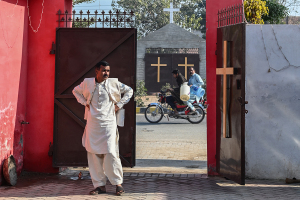Heat Wave: No Relief in Sight for Most of US
While the North and East coast regions have experienced a tad dip in temperatures from last week’s boiling weather, the Midwest and South have not been so lucky. Accuweather declared on Sunday that these regions can expect high temperatures to continue at least until the next week. Most of the central United States is under excessive heat advisory for this week.
“There’s a large ridge of high pressure that has been parked across south central U.S. and that has caused significantly high temperatures throughout the month of July. The pattern will persist and we can see high temperatures continue for the next five days,” explained Erik Pindrock, AccuWeather.com meteorologist.
The heat wave that has been parked across the central and southern regions is sealed by a vacuum of high pressure that keeps out cooler air currents from the north. Therefore, the first week of August is unlikely to bring a reprieve from the heat for many citizens.
The heat index is expected to shoot into the triple digits for some parts of central U.S. this week. Many cities have already hit record highs this summer. Reading, Pa., recorded a day in July in which it hit 106 degrees, a temperature not seen since 1869. Another record buster was Childress, Texas, that saw temperatures rise to 117 degrees on June 26th, something it hasn’t experienced since 1893, according to Reuters.
These communities weren’t the only record holders. According to the National Weather Service, cities and towns across the United States broke or tied records 2,672 times this summer, which is almost double that of one year ago. This past July has officially been named the hottest month on record, according to AccuWeather.com.
Not only have many states reached record highs during the day, but also record high overnight lows. Across the central region, temperatures have been known to stay up in the 80s overnight. The high overnight lows does not allow for the usual overnight cooling, allowing the heat to continue cooking overnight.
"There doesn't seem to be any relief in sight," said Dan Pydynowski, senior meteorologist at AccuWeather.com, according to Reuters.
"It's pretty incredible to just be locked into a pattern of this kind of dry heat for this long for the Southern Plains.”
“There’s a large ridge of high pressure that has been parked across south central U.S. and that has caused significantly high temperatures throughout the month of July. The pattern will persist and we can see high temperatures continue for the next five days,” explained Erik Pindrock, AccuWeather.com meteorologist.
The heat wave that has been parked across the central and southern regions is sealed by a vacuum of high pressure that keeps out cooler air currents from the north. Therefore, the first week of August is unlikely to bring a reprieve from the heat for many citizens.
The heat index is expected to shoot into the triple digits for some parts of central U.S. this week. Many cities have already hit record highs this summer. Reading, Pa., recorded a day in July in which it hit 106 degrees, a temperature not seen since 1869. Another record buster was Childress, Texas, that saw temperatures rise to 117 degrees on June 26th, something it hasn’t experienced since 1893, according to Reuters.
These communities weren’t the only record holders. According to the National Weather Service, cities and towns across the United States broke or tied records 2,672 times this summer, which is almost double that of one year ago. This past July has officially been named the hottest month on record, according to AccuWeather.com.
Not only have many states reached record highs during the day, but also record high overnight lows. Across the central region, temperatures have been known to stay up in the 80s overnight. The high overnight lows does not allow for the usual overnight cooling, allowing the heat to continue cooking overnight.
"There doesn't seem to be any relief in sight," said Dan Pydynowski, senior meteorologist at AccuWeather.com, according to Reuters.
"It's pretty incredible to just be locked into a pattern of this kind of dry heat for this long for the Southern Plains.”





























